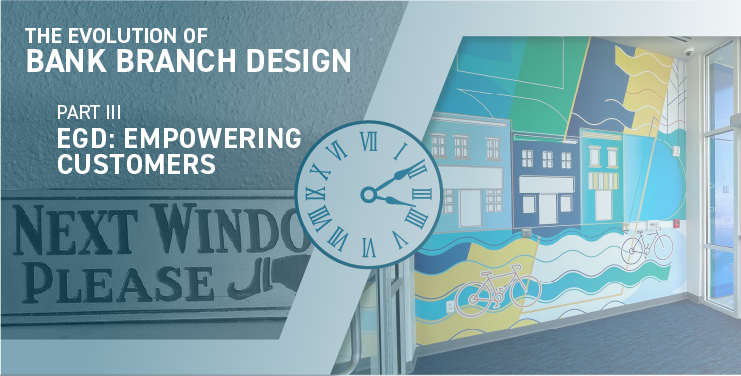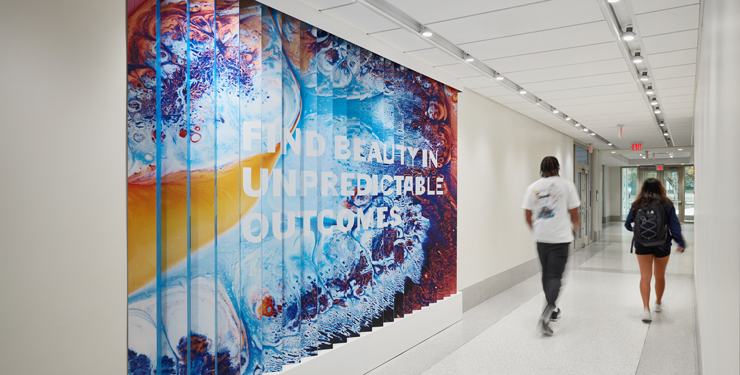
Experiential Graphic Design: Welcoming Employees Back to the Office
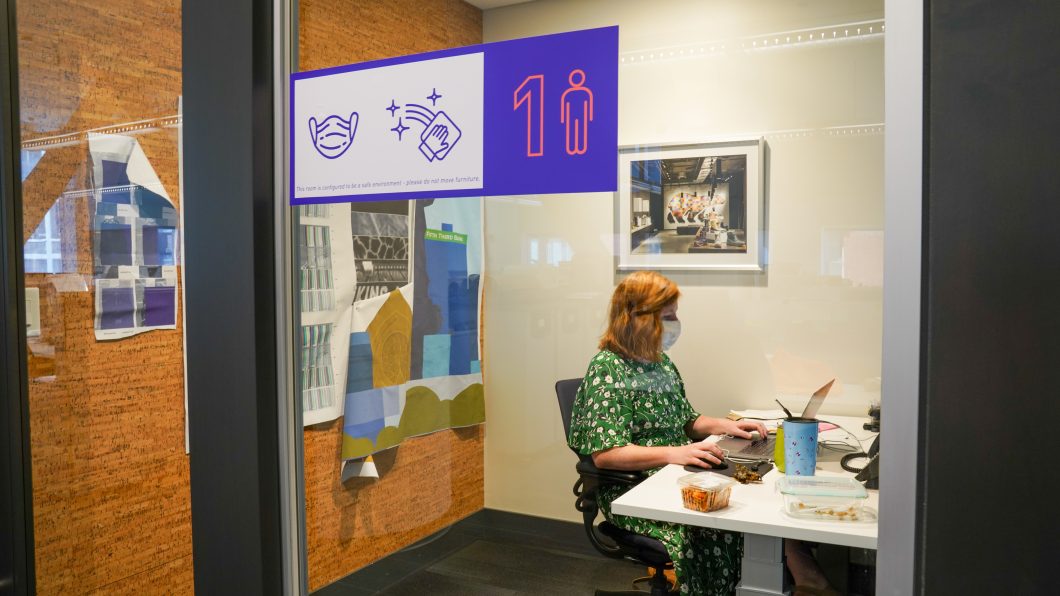
Huddle and conference rooms now feature signs with the number of people allowed in the space to ensure social distancing.
In March, COVID-19 changed everything. Employees from many industries began working from home, while others—essential workers—began following new protocols and policies to maintain their health and safety. There was a huge shift in the working experience, one that no one was expecting.
Now, as many organizations prepare to welcome employees back to the office, they are met with a challenge: How do we make employees comfortable while also changing their former routines to ensure the health and safety of the workplace?
The Need for COVID-19 Signage
Like many companies, BHDP was looking forward to returning to the workplace. Despite the enthusiasm to see coworkers and collaborate in person, the well-being of BHDP employees was a top priority. When the leadership team began to strategize about the transition back into the office, the need for clear, concise messaging became apparent.
BHDP’s Experiential Graphic Design team regularly works with a myriad of clients to create visually rich storytelling experiences that elevate the intangible, communicate messages, assist with wayfinding, and sometimes most importantly, encourage behaviors. Naturally, the Experiential Graphic Design team was eager to take this challenge and turn it into an opportunity.
With our unique point of view, we know how to use strategic signage and tone of voice to shape behaviors. All our offices—Cincinnati, Raleigh, and Columbus—required signage that would educate employees on the “new way to work” in a space that everyone was accustomed to.
After getting the go-ahead from government officials to operate at 50% capacity, our team—with counsel and support from Senior Interior Designer Carrie Beidleman as well as leadership and human resources—got to work on the solution.
Developing our Strategy
Teaching people a new way to work is not an easy task, especially in a familiar office environment where people spend a huge chunk of their time. We develop routines and habits, and these are hard to break.
Have you ever heard the phrase “I could get there with my eyes closed”? This phrase affirms how strong repeated behavior can be. So how do we prevent people from going on autopilot when they return to their workplace? We use visual reminders that disrupt routines and patterns.
Naturally, the Experiential Graphic Design team was eager to take this challenge and turn it into an opportunity. With our unique point of view, we know how to use strategic signage and tone of voice to shape behaviors.
Our strategy ensures the safety and well-being of BHDP employees by clearly communicating new routines with frequent reminders of current standards. Through information gained from roundtables with clients, research, and open dialogue with BHDP employees, we developed five categories of messaging to address key concerns and communicate CDC protocols. These five buckets are as follows:
#1: Program Protocol
Program protocol refers to the broad-scale messaging that outlines the new set of rules and regulations in the workplace. At BHDP, program protocol was actualized as a large, free-standing kiosk in our entryway that calmly demonstrates new sign-in procedures. It gives employees insight, before they even walk through the door, about what to expect in their new work environment. Icons were used to illustrate behaviors, and a step-by-step visual guide demonstrates the current procedures and the order in which they should happen.
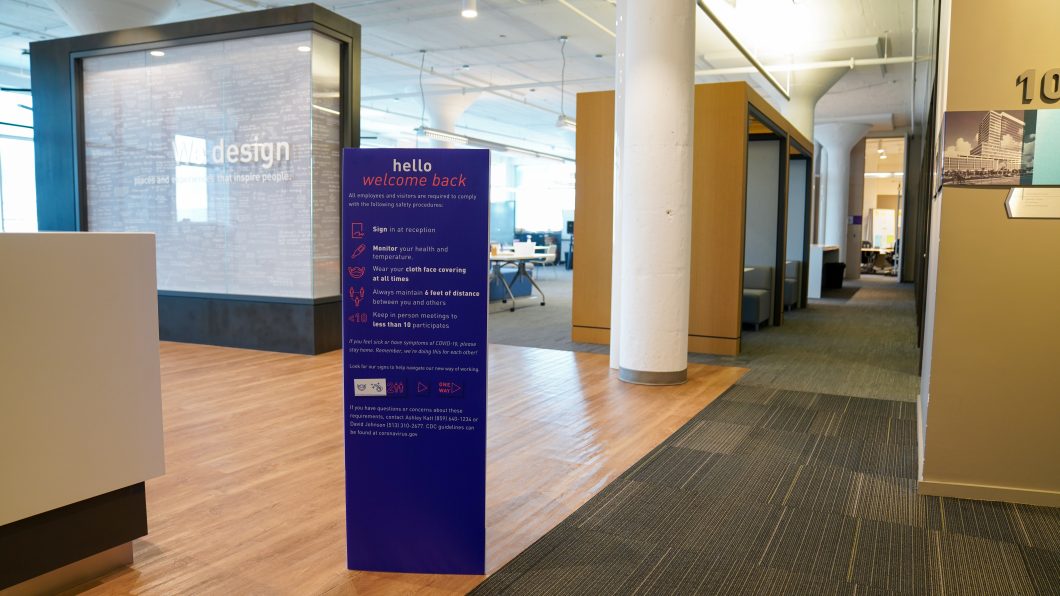
A large, free-standing kiosk welcomes employees to the workplace and outlines new safety procedures and guidelines.
We leveraged a bright color palette for all COVID-related signage that was strategically “off-brand” to reiterate the idea of disruption in the office environment.
#2: Suggested Behaviors
Through this pandemic, we have become accustomed to language about what not to do and have been inundated with mandated “don’ts” coming at us from all directions. Behavior suggestions flip the script and encourage healthy behaviors in a kind, suggestive tone—allowing employees to take advantage of collaboration in a safe way.
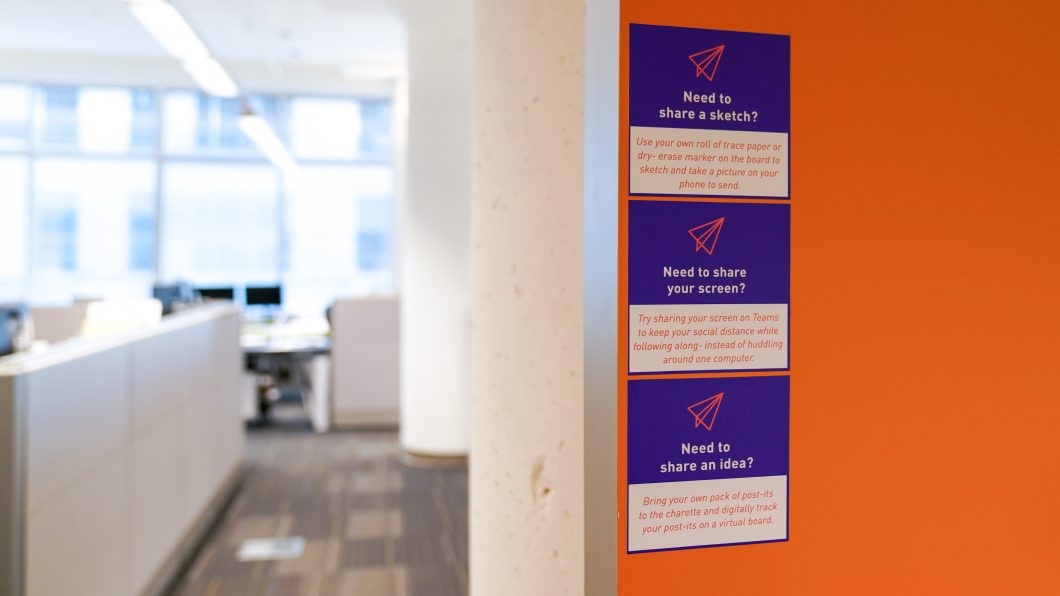
Temporary wall clings with behavior suggestions encourage safe collaboration.
We placed temporary clings in key collaboration areas to promote and inspire safe teamwork. For example, one clings asks “Need to share your screen?” then suggests sharing your screen digitally, through Microsoft Teams, to safely practice social distancing. Other clings suggest alternate ways to collaborate at a distance.
#3: Proximity and Circulation
When surveying employees, one key concern was navigating high-traffic areas like the restrooms or kitchen area. To help alleviate this stress, we used signage to designate new paths of travel. In some areas, purple arrows signify one-way travel. This prevents gatherings of large groups and averts awkward shuffles between coworkers.
In all closed or semi-closed areas—like huddle and meeting rooms—Carrie determined the appropriate occupancy based on the density of a six-foot radius. Where there were twenty chairs before COVID-19, there are now five. To reiterate this change, we placed occupancy postings on the door of each room.
#4: Queuing and Reminders
How do you ask your boss to give you more space? The sociological effects COVID-19 has had on human nature was a common concern we wanted to address. To alleviate the stress of reminding others to keep their distance, we developed stickers. The stickers, provided at sign-in, are worn as a visual reminder for others to respect boundaries and keep a six-foot distance. One sticker simply states, “I practice social distancing,” while the other states, “I am physical distancing for ____,” allowing employees to fill in the blank. It is essential to remind employees they are not simply social distancing for themselves but also for their colleagues and even sometimes for their colleagues’ families.
To prevent other old habits from returning, we designed and installed reminder clings at decision-making points throughout the space. Washing your hands, practicing physical distancing, and wearing your mask may seem obvious, but it is crucial to remind people of correct behaviors.
It is essential to remind employees they are not simply social distancing for themselves but also for their colleagues and even sometimes for their colleagues’ families.
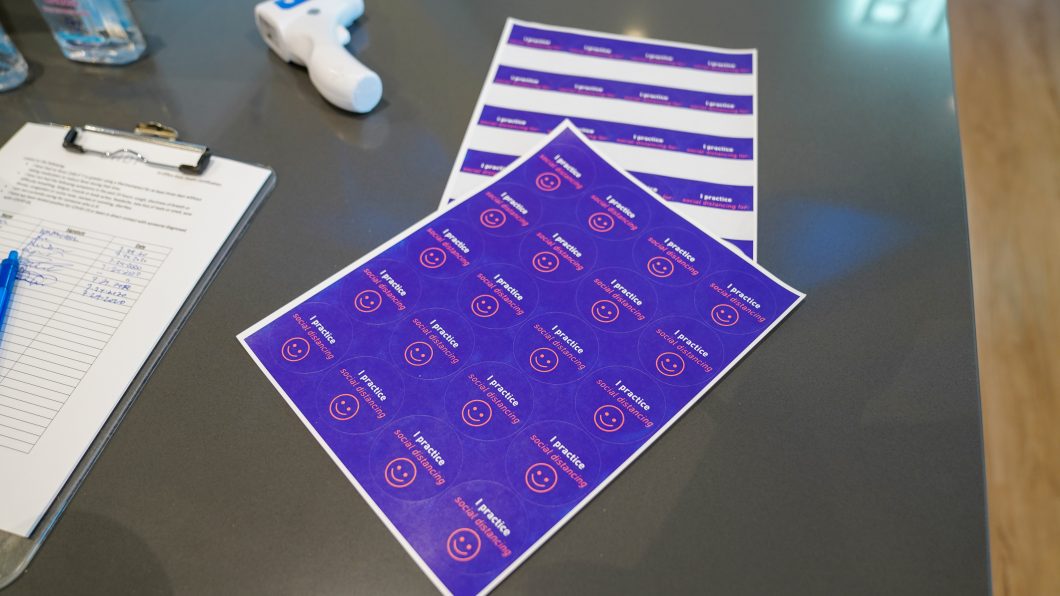
Stickers that say “I practice social distancing” are available to all employees at sign in.
#5: Cleaning Protocol
Due to the nature of the virus, an enhanced cleaning protocol is essential. We placed sanitation stations strategically around the office and developed table tents with a checklist instructing employees to take their personal belongings with them, wipe down all surfaces, put their masks in place, and lastly, to wash their hands.
Refining our Message and Delivery
Once we had identified what types of signage were important and why, it became critical—perhaps even more important—to strategize on how to deliver our message. This meant understanding the tone of voice of our messaging as well as the actual design and color of the signage.
- Tone: We rarely design with fear in mind. But, due to the state of the world right now, fear is inevitable. Still, that does not mean we have to communicate in a way that is clinical or somber. It’s important to remain human and to give clear and concise information that is simple, authentic, and to-the-point. Our signage includes plain language and minimal text to promote clarity, and our tone is calm and understanding.
- Color: BHDP’s brand colors are a blend of blues, greens, greys, and oranges. For the new COVID-19 signage, we required a color that would stand out and catch people’s attention. As stated previously, disruptions are necessary to counteract old routines and ways of working. As a group, we decided on purple for its distinctive, yet professional, qualities.
- Material: The signage is temporary and moveable. Changes are happening—fast—so signage that can be easily installed and removed is key. Window clings, table tents, and our free-standing kiosk are examples of the flexible signage we implemented.
The Results
Although BHDP’s offices are currently operating at 50% capacity, the feedback from both employees and leadership has been extremely positive.
One BHDP employee, Emma Webb, said “It makes me so happy to be back in the office. Our Experiential Graphic Design team was very successful in designing all of the signage and posters to help our employees feel safe in the workspace.”
Employees are sporting their new stickers, adjusting to the new paths of travel, and finding new ways to collaborate at a distance.
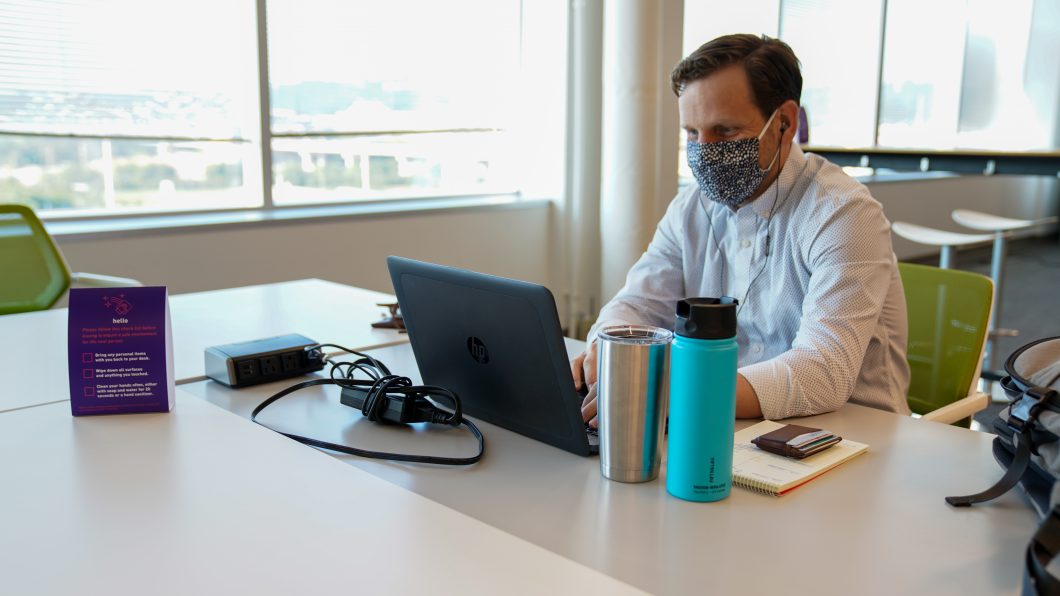
Many employees have adjusted to the new safety procedures—like wearing your face covering at all times.
We are designers, but we are people first. When the Experiential Graphic Design team started talking about the importance of signage in a post-COVID-19 workplace, it felt natural to tackle this challenge for BHDP. We were able to have candid and open conversations as a team—bringing the wall down and talking about our fears and personal perspectives with a professional mindset.
As with many of our projects, we listened with empathy and designed a smart, clear, and easily implemented solution: A Design for People.
It makes me so happy to be back in the office. Our Experiential Graphic Design team was very successful in designing all of the signage and posters to help our employees feel safe in the workspace.


